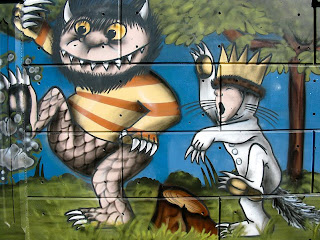Some non-human animals store truth values for propositions
When I tell you that Michael Dukakis is the president of the United States, you will have no problem understanding the statement. If I ask you about it later, you will have no trouble remembering it. You also know that this statement is false. This indicates that we store, in our minds, not only facts, but whether or not they are true. The truth status of a statement is called its "truth value."
I'm going to use the word "proposition" rather than "fact," because "fact" implies truth, and I'm going to be talking about propositions that might not be. I'm going to use "belief value" rather than "truth value" because what I care about is not whether or not it's actually true, but whether the person storing the fact believes it's true.
It's very important for humans to be able to represent belief values, particularly because we communicate with each other. People sometimes tell us things that are false, either because they are attempting to speak truthfully on a false proposition they believe, or they are trying to deceive us.* As such we need to know who to trust and who is unreliable.
Can non-human animals do this? Vervet monkeys (pictured) can. Vervets have calls they make when they spot particular predators (eagle call, leopard call, snake call, etc.). Very cool. It has been observed that during skirmishes, sometimes a member of a losing troop will sound a leopard call to scatter everyone (reported in Dennett, 1998). Dennett also describes (can't find the reference) an experimental intervention in which they framed a monkey. Scientists recorded the warning calls of a particular vervet and broadcast the sounds at inappropriate times. Eventually, the other monkeys ignored the calls of that monkey. They learned that he or she was unreliable. I think, at minimum, this means that they are representing the proposition "there is a leopard" along with a tag indicating that it's not true.
I see no reason for any non-communicative creatures to be able to be able to represent belief values. Rather, I think most simply record their perceptual environment into memory, and assume it's veridical. This suggests an interesting experimental prediction: that non-communicative animals cannot learn to ignore an illusion. They might learn to treat it differently, but I predict that they would continue to believe in the existence of what the illusions represent no matter how much you train them.
I would like to think that communication is a feature only of very intelligent animals, but I'm afraid it's just not true. Ants communicate, and even the cells of your body communicate with each other. What I would really like to know is if the belief value of a proposition is stored with that proposition, or if the belief values are stored separatrely, indexed to the propositions. This has implications for cognitive modeling.
* The movie "True Lies" is meant to sound like a contradiction, but it isn't, really. A true lie would be when someone believes a false thing, x, and then lies to you by stating not x. For example, Jack believes in the lunar effect even though there isn't one, but then lies to me by saying it doesn't exist, perhaps to impress me because he knows I'm a scientist. Jack stating that there is no moon effect is a true lie.
REFERENCES
Dennett, D. C. (1998) Brainchildren: Essays on Designing Minds. MIT Press. p290


Comments